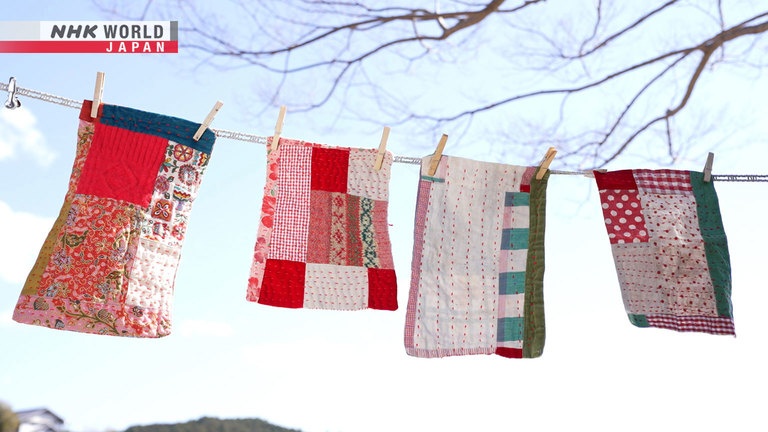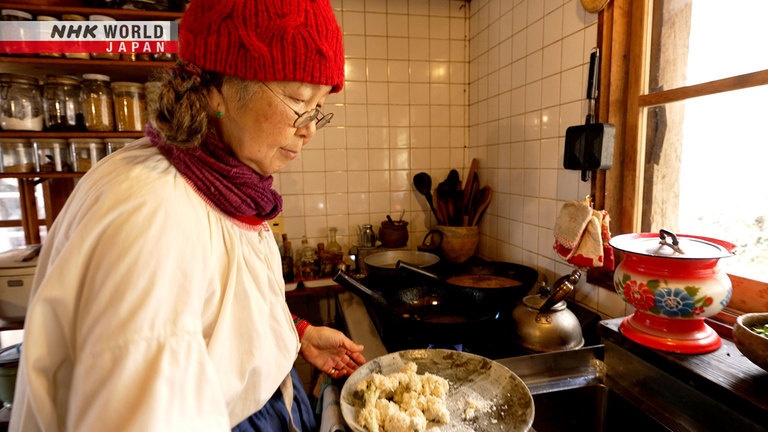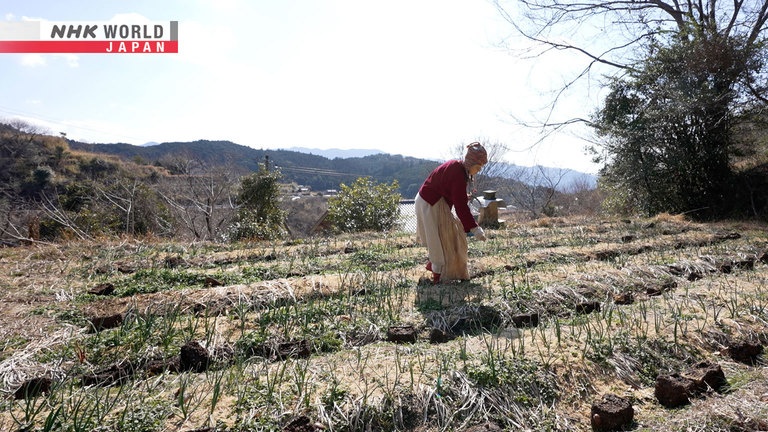Handmade Green Living
Textile artist Hayakawa Yumi lives on a verdant mountainside. Using cloth gathered from all over Asia, she makes one-of-a-kind clothing, bags and more. Scraps of fabric from her work are scattered all over her home studio as she never discards them. Almost completely self-sufficient, all her kitchen scraps go to making compost. And ash from her fire is used for washing dishes or scattered in her vegetable garden. Valuing the cycle of life.



Transcript
Since ancient times, the Japanese have believed that a life force resides in all creations.
Valuing and caring for the things we use, a "Zero Waste Life."
Pointing the way to better living for a new era.
Even tiny scraps still have some life,
so I use everything to the very end.
A house on a verdant mountainside in Kochi Prefecture, western Japan.
It's the place Hayakawa Yumi calls home.
She's a textile artist; a maker of clothing and other goods rooted in daily living.
Today, she's making traditional Japanese work trousers.
Small scraps of cloth are inevitably generated in the process.
Her workshop is full of them.
I've been making clothing since
I was in my 30s, nearly 30 years.
Instead of throwing out the scraps,
I value them and use them for things.
No matter how small the scrap, she refuses to throw it away.
A kind of patchwork...
She sews the tiny pieces together...
...using them as collars for clothing or dishrags.
Both her cutting and sewing styles are quite bold, as are the finished products.
I don't really measure,
I just sort of make them.
Things like dressmaking
require millimeter precision.
But I don't enjoy that sort of thing,
I prefer a bit more freedom.
I find making things quite liberating.
The resulting trousers are loose-fitting and comfortable.
Each stitch is like a prayer,
breathing life back into the material.
Scraps once destined for the literal "scrap heap" are gradually transformed into unique creations with every stitch.
Her work with textiles began with a tour of the Asian continent.
In countries like Thailand, India, and Nepal, she became fascinated with the local fabrics she encountered, collecting them as she went.
The people in Thailand or Indonesia
use a cloth like this to carry their babies.
And on Madagascar, when they die
they're buried in cloth like this.
When I heard that, I thought,
we're born and we die wrapped in cloth.
It's amazing, fabric. It's like a
physical expression of motherhood.
Fabrics filled with memories of her travels...
...making those scraps all the more appealing.
It's interesting to me to see the
continuous cycle, 30 years of cloth...
in the pieces that I make.
Without all this fabric
my work wouldn't be my work.
Avoid waste and use things to the very end, an attitude also expressed in her daily life.
She raises her own fruits and vegetables in fields around her home, leading an almost completely self-sufficient existence.
With her morning's sewing done, she begins preparing for lunch with a group of fellow artists from the area.
She uses one of her own cloths to dry the freshly picked arugula.
For today's menu: deep-fried cauliflower and mustard-green curry.
All harvested from her own gardens.
Times like these when everyone gathers for a meal are what she cherishes most.
- This is cauliflower, right?
- This is cauliflower, right?
- Yes, cauliflower, frozen in the field.
After the meal, all the food scraps go into the compost.
Once fermented, it enriches the soil in her fields.
Her home and the water for her bath are heated with a wood fire.
The remaining ash also doesn't go to waste.
Scattered in the garden, it helps control the pH level of the soil.
Ash is also useful for
scouring pots and pans.
It can do almost anything,
you can even use it for dyeing.
Eating vegetables from her garden, returning the scraps and ashes to the soil...
Hayakawa values the cycle of life in everything she does.
Without the cycle,
you end up with all kinds of waste.
But with it, things are revived,
they come back to life.
Living in the cycle is much more pleasant.
I return as much as I can to the soil.
Hayakawa has been looking forward to this day all year.
Today, she plants the golden mandarin oranges, her favorite.
In just a few years' time, they'll bear fruit.
We have children who have children
who then have our grandchildren.
It's the same with plants
passing from seed to seed.
It's all one big circle. It's important
to feel that you're a part of it.